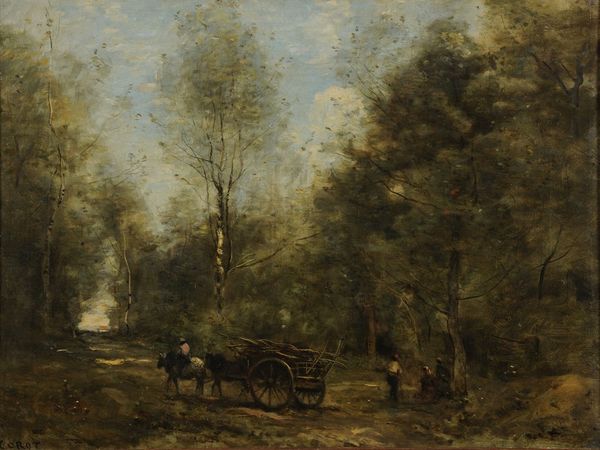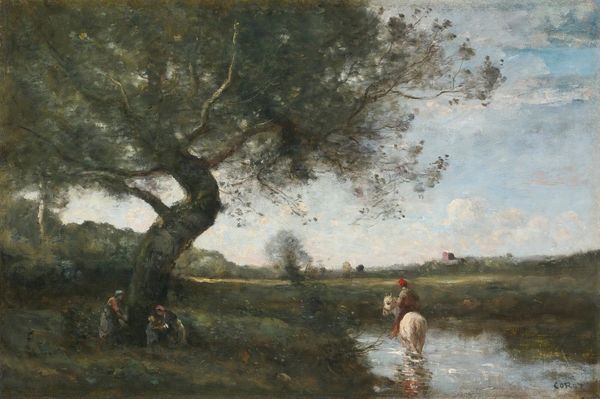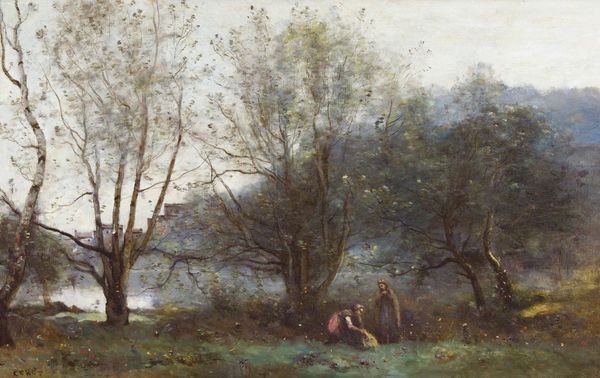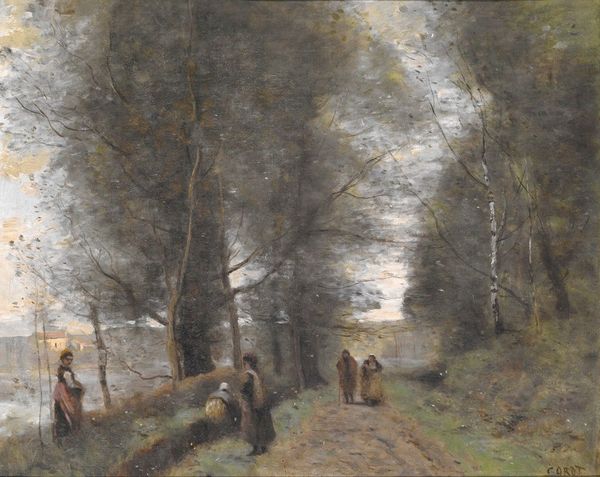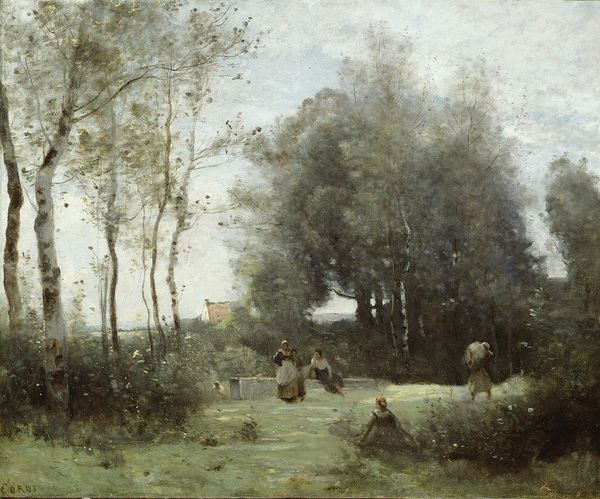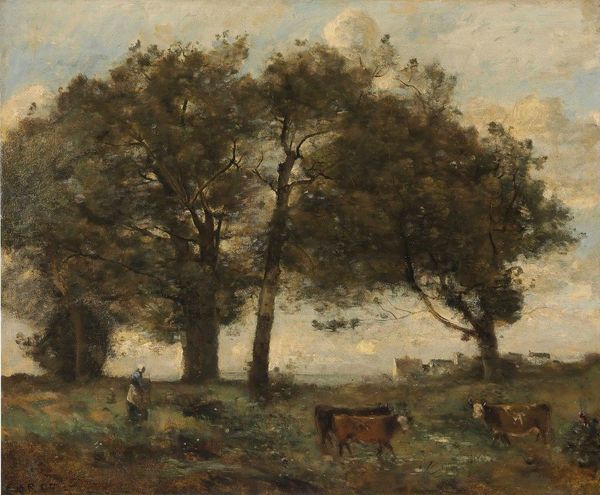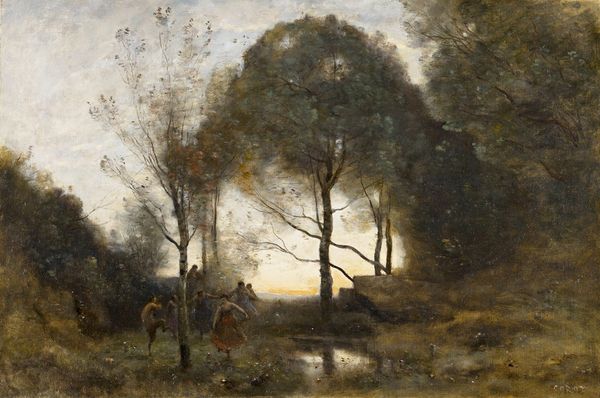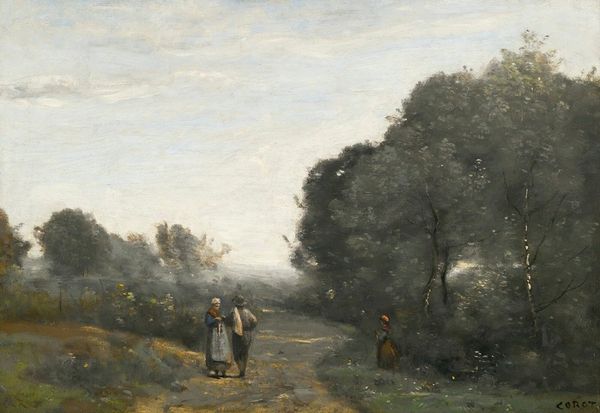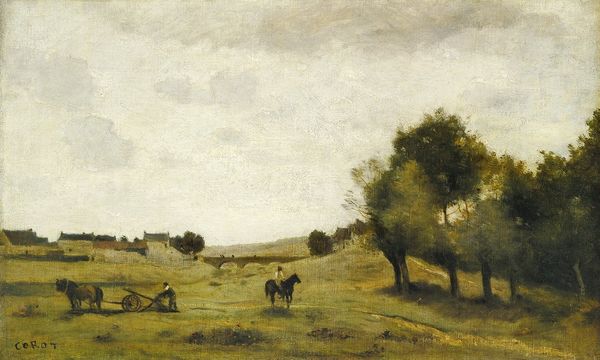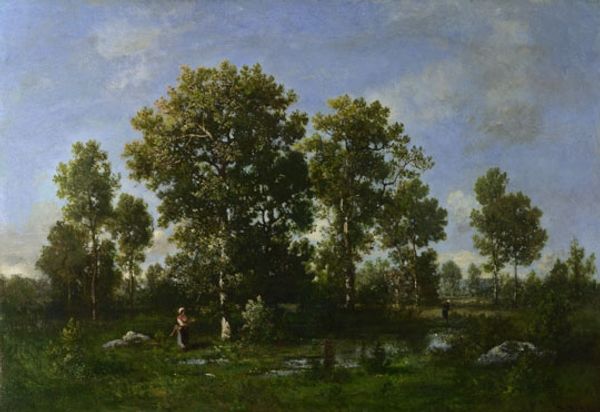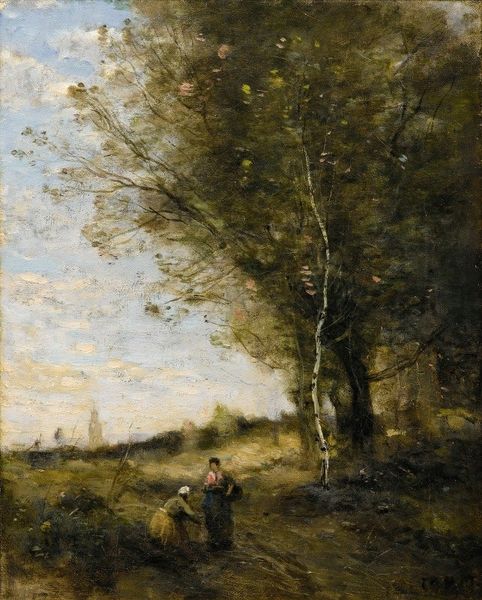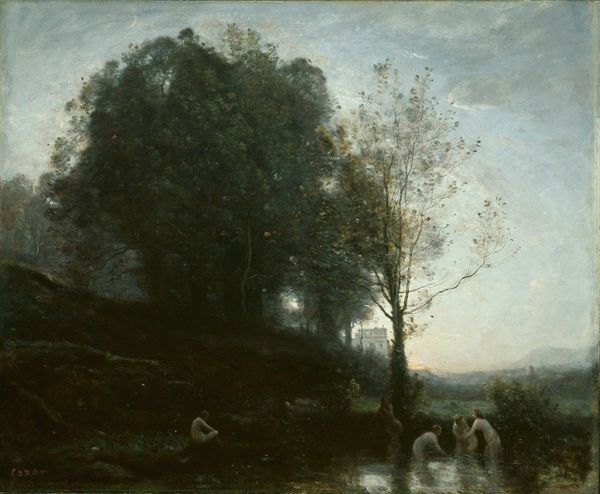
plein-air, oil-paint
#
plein-air
#
oil-paint
#
landscape
#
figuration
#
oil painting
#
romanticism
#
watercolor
#
realism
Copyright: Public Domain: Artvee
Curator: What a gentle scene. My immediate feeling is one of quiet observation, like stepping into a private moment in the French countryside. Editor: That's apt. We're looking at "Souvenir of Coubron." Though the precise date isn't known, it’s unmistakably by Camille Corot, rendered in oil on canvas, reflecting his dedication to plein-air painting. It captures the village of Coubron. Curator: And it does so with such an understated hand. Corot isn't just representing the landscape, he’s offering a glimpse into the social fabric—these laborers along the water’s edge, their everyday toil rendered with as much care as the birch trees. It's a statement, isn't it, elevating the common worker. Editor: Absolutely. You can almost feel the texture of the unprimed canvas beneath the thin layers of paint. It emphasizes the rawness, the work involved in its creation, contrasting the elite expectations of the academy in those years. His emphasis on observation of light and tonal values speaks to his commitment to the real, grounding it within its socio-economic context. Curator: How do you see that working? Editor: Look at the layering of greens, not idealized or romanticized, but rendered honestly. Then notice the activity of the peasant figures at the river's edge– that is more like an assertion of their presence. Corot treats them almost like another material in the landscape—their existence inherently connected to the land. The scene's serenity is deceptive; these rural laborers were essential, producing value through toil. Curator: A fascinating point, especially when considering the prevailing styles of the time. Corot found success later in life with images very like this one, so he perhaps was shrewd in who his audiences were as tastes evolved, not just documenting a social reality but capitalizing on it, shaping his image. Editor: Precisely, and the portability of oil paint allowed him to easily translate a location’s essence onto transportable canvases like this, further enabling how his scenes were bought and sold at his and later points in time, commodifying his scenes. I still am drawn to the texture of those leafy masses, each tiny dab of pigment signifying not only a leaf, but also a piece of Corot's labor—a subtle interplay. Curator: Seeing this through both our perspectives, I feel it enriches the experience. Corot offers a moment of calm observation that carries historical and social weight. Editor: Yes. Understanding the materials and Corot's techniques brings another layer of appreciation, acknowledging how his vision reflects and shapes the realities of his time.
Comments
No comments
Be the first to comment and join the conversation on the ultimate creative platform.

